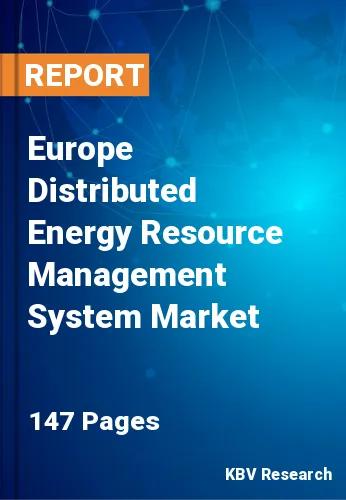The Europe Distributed Energy Resource Management System Market would witness market growth of 18.9% CAGR during the forecast period (2023-2029).
DERMS manages local events on the grid. This is because the distributed energy resource management system may precisely target particular distribution system assets because it is able to pinpoint every asset's exact location on the system. Thus, when a utility or company encounters difficulties with too many renewables coming online, the system knows precisely which assets to control to reduce related issues. For example, this allows the DERMS to control devices downstream of defined transformers as well as measured points on feeder lines.
These assets include intelligent inverters or more conventional utility control technology. Due to its location-based focus, DERMS is able to exert extensive control over real power (watts), reactive power (VARs), and voltage. Due to its capacity for managing a sizable number of distributed assets, the grid can become more adaptable and robust. Given the increase in the availability of renewable energy sources, this is crucial. For instance, optimizing DERs on the grid can effectively address voltage swings that result from the high unpredictability of photovoltaic (PV).
Governments throughout Europe are making investments in advanced metering technology as part of the growing efforts to upgrade the electrical grid as well as reduce T&D losses. By 2024, the EU might install millions of smart meters, approximately 225 million and 51 million for electricity and gas, respectively. This entails a potential €47 billion investment. Nearly 77% of European users will have smart electricity meters by 2024. These and other factors are fueling the requirement for smart grids. As a result, the need for DERMS systems will increase rapidly in the region, enabling market expansion throughout the forecast period.
The Germany market dominated the Europe Distributed Energy Resource Management System Market by Country in 2022 and would continue to be a dominant market till 2029; thereby, achieving a market value of $67,942.7 Thousands by 2029. The UK market is exhibiting a CAGR of 17.9% during (2023 - 2029). Additionally, The France market would showcase a CAGR of 19.8% during (2023 - 2029).
Based on Offering, the market is segmented into Services and Software (Virtual Power Plant (VPP) Software, Management & Control and Analytics). Based on End User, the market is segmented into Industrial, Commercial and Residential. Based on Application, the market is segmented into Solar PV Units, Energy Storage Systems, Wind Generation Units, Combined Heat & Power Generation Systems, EV Charging Stations and Others. Based on countries, the market is segmented into Germany, UK, France, Russia, Spain, Italy, and Rest of Europe.
Free Valuable Insights: The Worldwide Distributed Energy Resource Management System Market is Projected to reach USD 1.1 Billion by 2029, at a CAGR of 19.4%
The market research report covers the analysis of key stake holders of the market. Key companies profiled in the report include Siemens AG, Schneider Electric SE, General Electric Company, Hitachi, Ltd. (Hitachi Energy Ltd.), Emerson Electric Co., Mitsubishi Electric Corporation, Oracle Corporation, Itron, Inc., Generac Holdings, Inc. and Enel S.p.A.
By Offering
By End User
By Application
By Country
Our team of dedicated experts can provide you with attractive expansion opportunities for your business.

